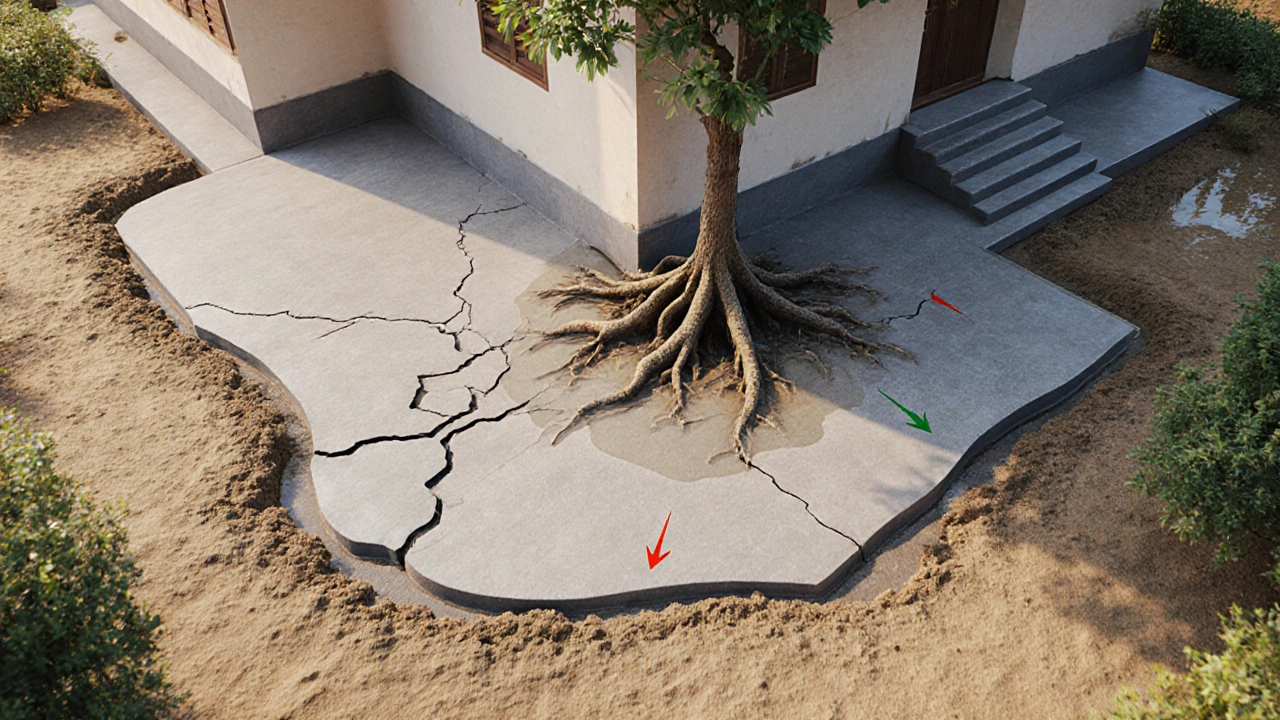Structural Damage: Signs, Causes, and How to Fix It Before It's Too Late
When you see a crack in your wall, it’s easy to brush it off as normal settling. But not all cracks are harmless. Structural damage, physical harm to a building’s load-bearing parts that compromises safety or stability. Also known as building failure, it doesn’t always come with a loud bang—it often whispers through small shifts, slow cracks, and doors that won’t close. This isn’t about cosmetic fixes. It’s about whether your home or building can still hold up under its own weight—and the weight of weather, time, and use.
Structural damage usually starts with foundation cracks, breaks in the base of a building that can grow and lead to shifting or sinking. These aren’t just surface blemishes. If they’re wider than a quarter-inch, run diagonally, or keep getting bigger, they’re warning signs. The cause? Often structural settlement, the gradual sinking or shifting of a building’s foundation due to poor soil, water damage, or inadequate support. Think of it like a chair on uneven floor—over time, it leans, wobbles, and eventually breaks. Water is the silent enemy here. Poor drainage, leaking pipes, or even heavy rain can soften the ground under your foundation, making it give way. And once the foundation moves, everything above it follows: walls crack, floors slope, windows stick, and staircases groan.
It’s not just old homes. Even new builds can have structural damage if construction was rushed, materials were subpar, or design didn’t match the soil. We’ve seen homes with perfect paint jobs hiding cracked footings, and commercial buildings with steel frames pulled out of alignment by unseen ground movement. The real danger? Waiting. Structural damage rarely gets better on its own. It gets worse—and more expensive to fix. A small crack today could mean a full foundation replacement tomorrow.
So what should you look for? Beyond cracks, watch for gaps between walls and ceilings, doors that stick or won’t latch, uneven floors, and chimneys pulling away from the house. These aren’t just annoyances—they’re red flags. And if you’ve ever wondered why some repairs cost $500 and others cost $50,000, the difference is timing. Fixing structural damage early often means patching, injecting, or adding support. Waiting means demolition, rebuilding, and months of disruption.
Below, you’ll find real-world guides that break down exactly how to spot these problems, what they mean, and what to do next. From DIY checks on foundation cracks to understanding when a professional is non-negotiable, these posts give you the facts—not fluff. Whether you’re a homeowner worried about your house or a professional looking to refresh your knowledge, this collection covers what actually matters when it comes to structural damage—and how to stop it before it costs you everything.
Can Foundation Repair Cause More Damage? Risks & Prevention Guide
Discover how foundation repair can unintentionally cause more damage and learn proven steps to prevent it. This guide covers risks, repair methods, DIY limits, and a handy checklist.
Learn more...Does Insurance Cover Structural Damage? What Homeowners Need to Know
Many homeowners wonder if their insurance will cover structural damage, especially when it comes to foundation issues. This article explains what kinds of structural damage are typically covered, how to spot exclusions, and ways to improve your chances of getting a claim approved. You'll also find out which repairs usually aren't covered and get tips for talking to your insurer. Get the facts before you face a big repair bill.
Learn more...
